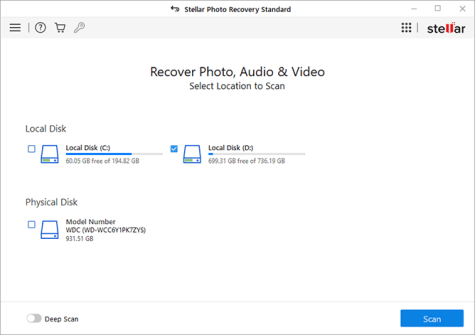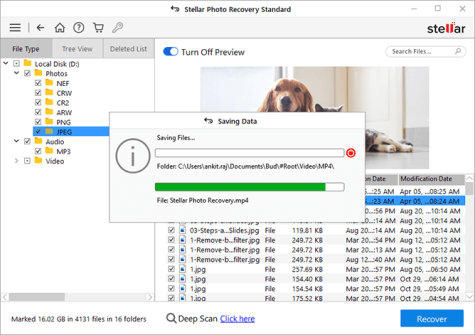Understanding the Warning Signs of a SSD/Hard Drive Failure & how to recover data?
November 7, 2022
Solid State Drives (SSDs) and Hard Disk Drives (HDD) are fast gaining popularity as portable storage devices among consumers. SSDs are faster, lighter, and consume less power. Unlike a HDD, an SSD uses non-volatile (flash) memory to store data. In simple words, this means it has no moving or mechanical parts. But just because an SSD is less likely to fail, this doesn’t mean they are foolproof or there will not be any SSD failure.
HDDs are commonly used as storage devices because they are easily available, affordable, and offer a higher storage capacity. As compared to an SSD, HDDs have a longer lifespan. However, hard disk drive failures are one of the most common causes of data loss. In fact, 1,40,000 hard drives crash each week in the US alone, according to Clutch.
SSDs and HDDs both can fail before their expected lifespan due to various logical errors, physical damage or software malfunction. That’s why you should always stay one step ahead and be prepared with a backup of your data for worst-case scenarios.
Many times, SSD or hard drive failures are unpredictable and occur without any warning. However, there is a possibility that you can tell if your HDD or SSD is failing by looking at its symptoms and signs. Let’s find out all that and much more.
Warning signs of SSD/Hard Drive Failure
An SSD or HDD will show some kind of symptom or sign which can indicate that it is nearing its end. If you are aware of such signs, then you can take precautionary measures to avoid data loss in future. Here are a few common symptoms of a dying HDD/SSD:
- Bad Block/sector error – Just like bad blocks on SSDs, there are bad sectors on HDDs. If bad blocks or sectors are created then the storage device will have problems in reading or saving the file. This can result in HDD/SSD failure.
- OS crash during boot – If your OS crashes during boot then it indicates a high possibility of disk problem. Bad blocks or sectors on your SSD/HDD can cause your system to crash unexpectedly.
- File System Needs Repair error – If your system is repeatedly showing a notification or error message asking you to repair the file system, then you should immediately see if the issue is with the system or your HDD/SSD. Ignoring such error messages can be problematic for you.
- Strange sounds like clicking or scratching- If your hard disk drive or SSD is making some strange noises like clicking or scratching, then it is definitely not a good sign. It means that the disk might be damaged.
How to recover files after SSD/Hard Drive Failure?
Now that you know the common errors and symptoms an SSD or HDD shows, do keep a look out for them and take timely action. The best way to keep your data safe in such cases is having a backup. Try to take backups of your data at regular intervals. But still no matter how cautious we are, accidents do happen and we cannot always be prepared.
If you have failed to take backup and the data is lost, then you can take the help of a Professional photo recovery software like Stellar Photo Recovery. You can recover deleted photos and videos from HDD, SSD and other storage devices. If the files are corrupt, then you can even repair them using Stellar Photo Recovery software. This easy-to-use software works on both Windows and Mac operating systems.
Follow the given steps to recover data after SSD/hard drive failure:
- Download and launch Stellar Photo Recovery software on your system.

- Connect the SSD or HDD from which you want to restore photo and video files and then select it once it is identified by the software.
- Click Scan and select one partition if SSD has two or more partitions.
- Once scanning is complete, it will show the recoverable files.
- Select the photos and videos which you want to retrieve by selecting ‘Recover’.

- All the retrieved photo and video files will be saved at a safe location chosen by you.
Summing it up…
It is very difficult to retrieve data when a SSD or HDD fails to work due to various reasons. That’s why it is pertinent to know the warning signs or symptoms beforehand so that the users can take appropriate action before the disk gets corrupted.
Even though you were careful, still no one can predict what might happen. In case of any accidental deletion or SSD/HDD, being corrupted then do not worry about it. Stellar Photo Recovery software can come to your rescue in such situations. Storage devices such as HDDs and SSDs develop bad sectors or blocks, which makes data stored on it inaccessible.





